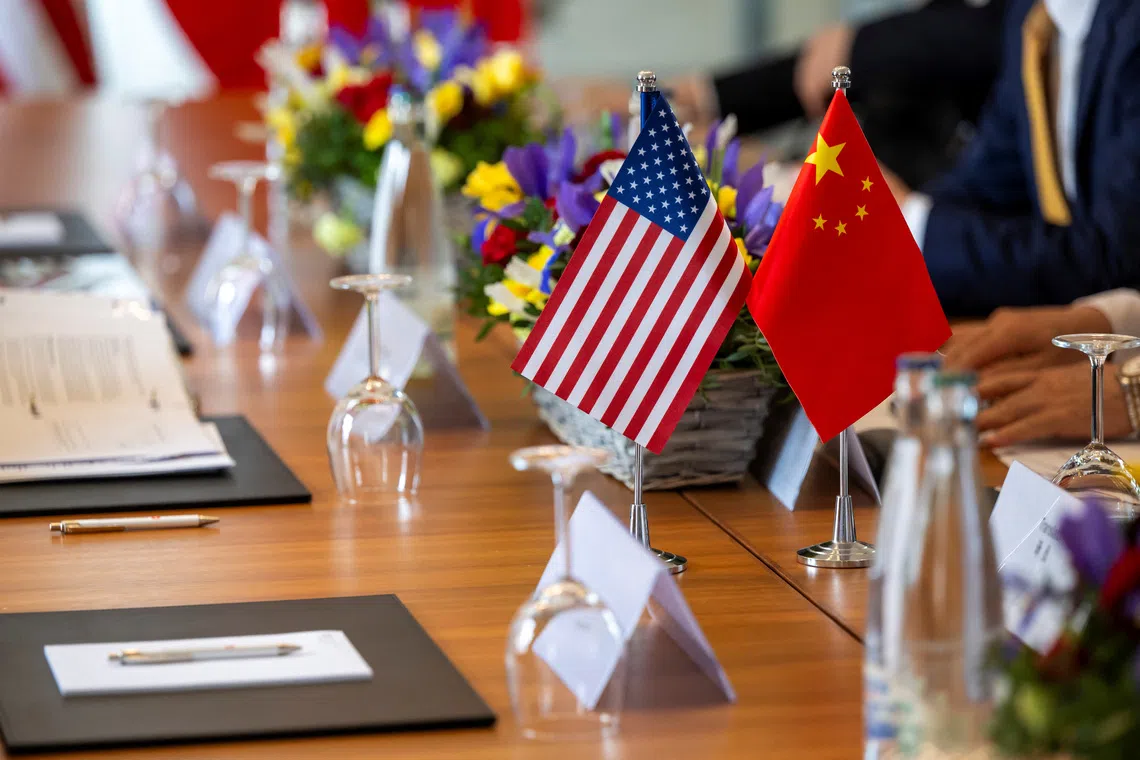US and Chinese officials face off on export controls, Trump tariff threat in Malaysia
Sign up now: Get ST's newsletters delivered to your inbox

Top economic officials from the US and China will arrive in Kuala Lumpur, Malaysia, on Oct 24 for talks to prevent a trade war escalation.
FILE PHOTO: REUTERS
Follow topic:
KUALA LUMPUR – Top economic officials from the US and China were due to arrive in Kuala Lumpur on Oct 24 for talks to prevent a trade war escalation and keep next week’s meeting between US President Donald Trump and Chinese President Xi Jinping on track.
US Treasury Secretary Scott Bessent and US Trade Representative Jamieson Greer will meet Chinese Vice-Premier He Lifeng to find a way forward after Mr Trump threatened new 100 per cent tariffs on Chinese goods and other trade curbs starting on Nov 1 in retaliation for China’s vastly expanded export controls on rare earth magnets and minerals.
The talks, due to start on Oct 25 on the sidelines of the Asean summit in the Malaysian capital, would be the fifth meeting between Mr He, Mr Bessent and Mr Greer since May, shifting from European cities to a key Asian exporter dependent on both China and the US.
Rare earths stranglehold
The talks are again focused on China’s stranglehold over global supplies of rare earth minerals and magnets essential for high-tech manufacturing, which Beijing has used as an effective leverage point against Washington.
In April, Mr Trump hit Chinese imports with new tariffs that quickly escalated to triple-digit rates on both sides, and Beijing cut off rare earth supplies to US buyers, a move that threatened to halt US production of electric vehicles, semiconductors and weapons systems.
Mr Bessent and Mr Greer’s first meeting with Mr He in Geneva in May led to a 90-day truce, which brought down tariffs sharply to about 55 per cent on the US side and 10 per cent on the Chinese side, and restarted the flow of magnets.
The terms were refined in London and Stockholm, and September talks in Madrid produced a deal to transfer Chinese short video app TikTok to US ownership control.
But the delicate truce frayed two weeks later, when the US Commerce Department vastly expanded a US export blacklist to automatically include firms more than 50 per cent owned by companies already on the list, banning US exports to thousands more Chinese firms.
China struck back with the new global rare earth export controls on Oct 10, aiming to prevent their use in military systems by requiring export licences for products using Chinese rare earths or rare earth refining, extraction or processing technology developed by Chinese firms.
Mr Bessent and Mr Greer blasted China’s move as a “global supply chain power grab” and vowed that the US and its allies would not accept the restrictions.
Reuters reported that the Trump administration is considering a plan to up the ante with curbs on a dizzying array of software-powered exports to China, from laptops to jet engines, according to sources familiar with the deliberations.
Stepping back from brink
But their challenge in Kuala Lumpur, analysts say, is to negotiate a return to the prior status quo to keep magnets flowing and avoid a massive US tariff hike.
If they fail, the Oct 30 Trump-Xi meeting in South Korea during the Asia Pacific Economic Cooperation Summit may be cancelled.
“Ultimately, I’m optimistic that at this particular meeting, there will be tactical decisions to sort of extend the pause,” said Mr Dennis Wilder, a senior fellow at Georgetown University’s Initiative for US-China Dialogue on Global Issues.
“Trump won’t go to the 100 per cent tariffs. The Chinese will back away a little bit from this idea that rare earth exports to defence sectors around the world will not happen,” Mr Wilder told an online forum hosted by the Centre for Strategic and International Studies think-tank.
The US side is also likely to press Beijing to resume buying American soya beans after China bought none in September, heaping economic pain on farmers, a key Trump political constituency.
But the talks are less likely to dig into the core US complaints about China’s export-driven economic model that prompted Mr Trump’s tariffs in the first place, which include a long-sought rebalancing of the Chinese economy towards more consumption and reducing its excess production capacity.
“We’re not able to get to that because we’ve got to ask them to buy soya beans, right?” said Dr Philip Luck, director of the Centre for Strategic and International Studies’ Economics Programme. “It’s not the core issue.” REUTERS

